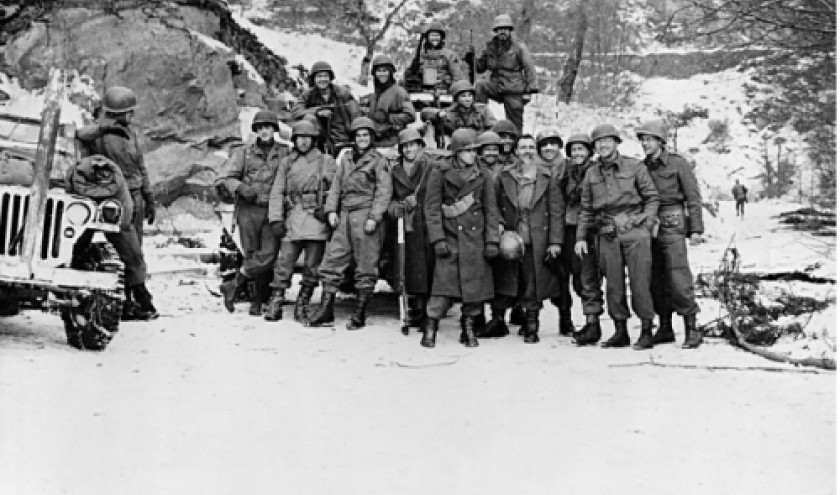Despite the common enemy, British and American generals experienced some rivalries and disagreements over their strategies. On December 28th, during a meeting in Hasselt, American Army General Dwight Eisenhower, Supreme Commander of the Allied Forces, presented his strategy for a counteroffensive in the Ardennes. The plan was to cut the salient in its middle to trap the German troops to the west. The British 30th Army Corps under Field Marshal Montgomery and the 1st American Army under General Hodges were to push south while American General George Patton was tasked with bringing his 3rd Army north. The junction was planned at Houffalize, a road junction on the axis between Liège and Bastogne, and an important crossing point for its bridge over the Ourthe River.
Patton, the true spearhead of the counteroffensive coming from the south, had already liberated northern France, from Cherbourg to Belgium. Eisenhower was counting on the rivalries between Generals Patton and Montgomery to reach Houffalize as quickly as possible. On January 12th, the American general aimed to arrive at Houffalize the next day, beating Montgomery in the race as he had done in Messina during the Sicilian campaign. On January 13th, he launched his 11th Armored Division towards Houffalize from Longchamps at the gates of Bastogne. But on January 15th, he still had ten kilometers to go.
That same evening, part of the reconnaissance battalion of the 11th Armored Division, commanded by Major Michael Greene, left Bertogne to reach Compogne around 7 PM. The road being well defended, they headed towards Bonnerue to reach Houffalize via a forest path. At 11 PM, the column of 60 vehicles set off. At the same time, Greene sent a reconnaissance platoon, commanded by Lieutenant Lucas, via the road arriving at the Rensiwez Bridge.
Once in the woods, with four kilometers left for Greene's men to reach the heights of Houffalize, the column was slowed by crossing a frozen stream and emerged from the woods one kilometer from Houffalize around 6:30 AM. The 11th Armored Division was fired upon by German soldiers entrenched in the ruins of the town's first houses. Greene deployed his troops and sent a patrol to cross the Ourthe, where it met a unit of the 2nd Armored Division (1st American Army). Practically at the same time, Lieutenant Lucas's reconnaissance platoon met a patrol of the 84th American Infantry Division at the Rensiwez Bridge.
On January 16th at 10 AM, the junction between the 1st and 3rd Army was thus achieved at two distinct points. The German troops trapped to the west of the salient were caught, while the rest of the German army gradually retreated to find themselves by the end of January behind their positions occupied at the beginning of the offensive.
